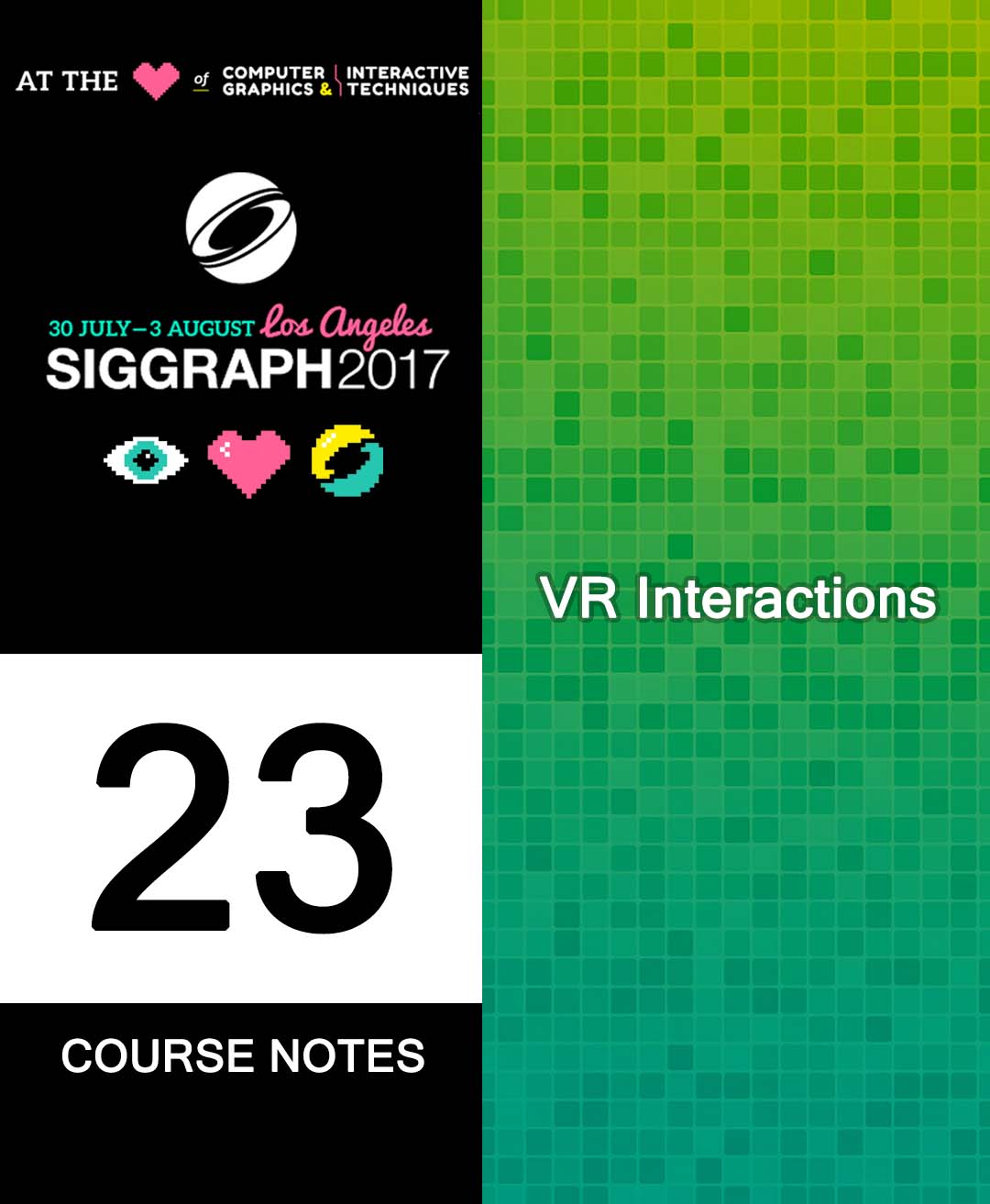“VR Interactions” by Marks and LaViola
Conference:
Type(s):
Entry Number: 23
Title:
- VR Interactions
Organizer(s):
Presenter(s)/Author(s):
Abstract:
Prerequisites
Some background in creating VR experiences.
Level
Intermediate
Who Should Attend
A diverse audience of developers, researchers, psychologists, and user-experience professionals who want to adopt new ways of interacting that go beyond basic designs.
Description
The most important part of VR interaction is the person doing the interacting. Human-centered interaction design focuses on the human side of communication between users and machines – the interface from the user’s perspective. Focusing on users is more important for VR than for any other medium. When VR is done well, interactions can be brilliant and pleasurable, but when they are done badly, they can result in frustration, fatigue, and sickness. There are many causes of bad VR, but the problems are usually centered on poor understanding of human perception, intuitive interaction, design principles, and real users. Quality interactions enhance user understanding of what has just occurred, what is happening, what can be done, and how to do it. For the best VR applications, not only must goals and needs be efficiently achieved, but the experiences must be engaging and enjoyable.
This course begins with the most fundamental aspects of VR interaction design that are essential for VR creators, then it provides extensive detail about various ways of interacting with the hands. Topics include human perception, human-machine communication, adverse health effects, input device classes and their characteristics, reference frames, interaction metaphors, patterns and techniques, multimodal input, bimanual interaction, and avatar interaction. The focus is on designing and developing content and goals, selecting input devices (and conversely designing around specific input devices), and many example interfaces such as realistic and non-realistic hands, hand-held panels, color cubes, jigs, 3D multitouch, and the viewbox. The course also includes a broad overview of how attendees can apply the define-make-learn iterative design cycle to their own VR interfaces and projects.





